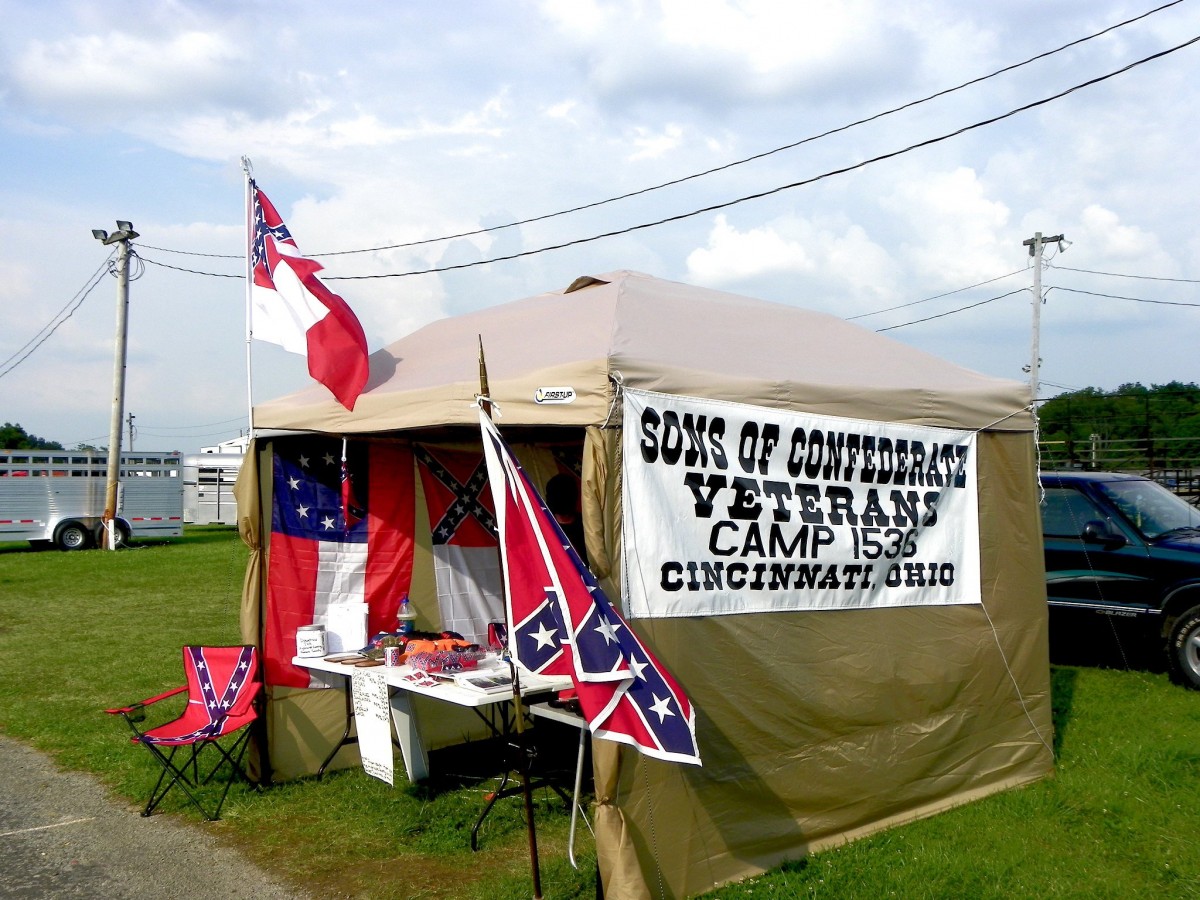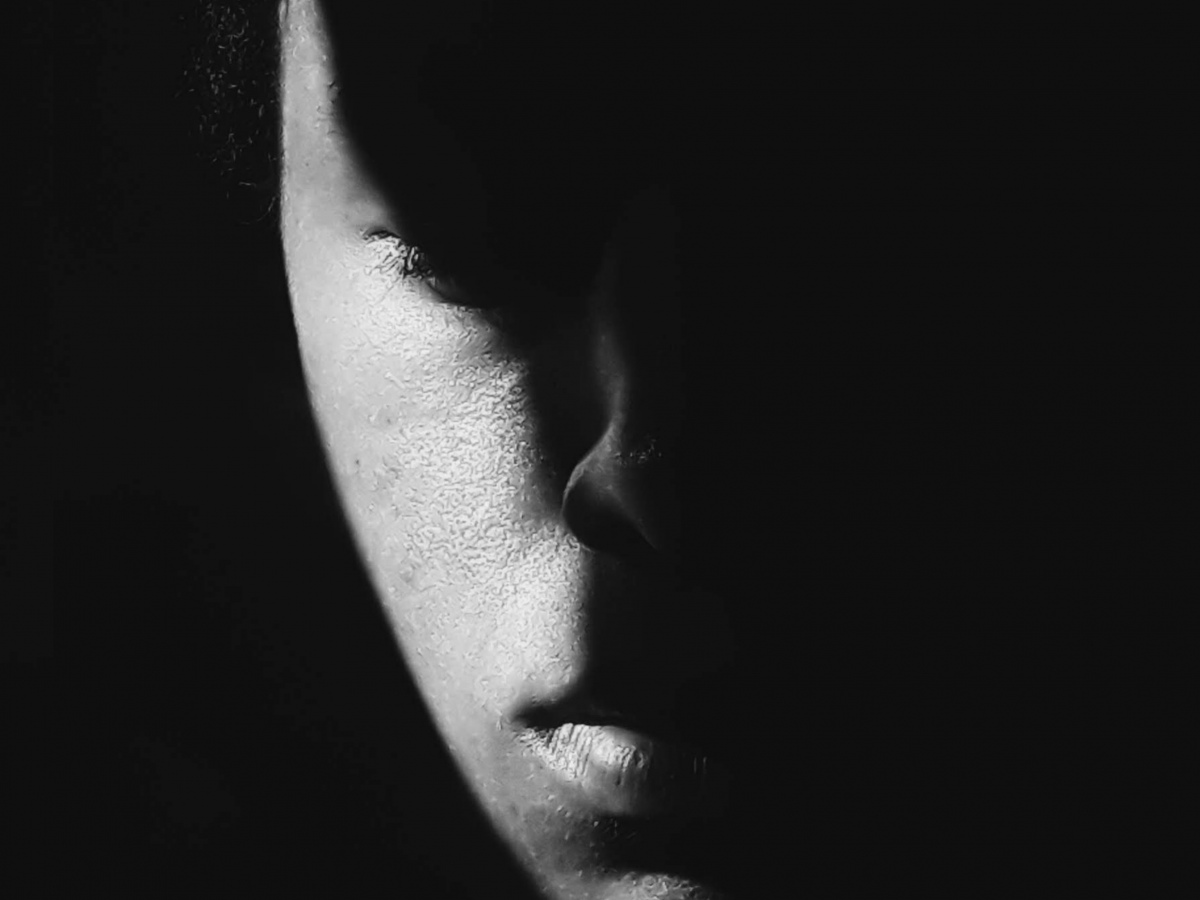Headlines across the country were dominated this year by three issues: COVID-19, the Black Lives Matter movement and the 2020 presidential election. So too is the case for the digital pages of 100 Days in Appalachia.
But in this list of our top 10 original stories of 2020, decided by your views, shares and comments, we see that while these topics were at the forefront of our readers’ thoughts, the nuance of their impact on our region – nuance that goes overlooked by national media outlets – was more important than ever.
Take look at our best work by exploring the list below.
1. People Are Fleeing to Appalachia to Escape COVID-19: That Needs to Stop
When the COVID-19 pandemic began, people fled larger cities to rural areas like Appalachia thinking it would be safer for them and their loved ones. But reporter Alison Stine explains that traveling in the midst of the pandemic not only increases the chances of exposing Appalachians to the virus, but also puts an additional strain on those communities – communities that were already struggling for access to food and clean water and had failing critical infrastructures even before the pandemic.
“Shelter safely— but also, shelter where you live and avoid inflicting an additional plague: locusts, endangering and stripping a region of the very little it has.”
2. Closing Our Church Doors Isn’t a Lack of Faith, It’s an Act of Compassion
Churches across the U.S. closed at the start of the pandemic to prevent the spread of COVID-19. In some states, like West Virginia and Kentucky, churches were exempt from the state actions that limited the number of people allowed to gather. David Hulme with the West Virginia Baptist Convention describes the dilemma church leaders throughout the region faced as the Easter holiday approached during the first spike of the virus’s outbreak.
“While the building is closed, the church is still open. The church is a body of believers; not a building. I would suggest that if the only mission of the church is to meet together in a building, then we’ve missed the whole point of being the church.”
I enjoyed this article today, it affirms the action that Christ gives “ Go and make disciples” instead of stay and make…
Posted by Bo Ireland on Monday, April 13, 2020
3. These Rural First Responders Are Fighting More Than a Global Pandemic

In his photo essay, 100 Days’ Report for America corps member Chris Jones documents his experience spending time with first responders in Marion County, West Virginia, as they attempt to manage the effects of the pandemic as well as an increase in other emergencies common in the state – motor vehicle accidents, elderly health problems and drug overdoses.
“‘No pictures of the body,’ he reminded me as he donned his own gown and mask while the medics prepared a white body bag, ensuring a final measure of sanctity and respect for yet another life lost during the COVID-19 pandemic. In a matter of minutes, the body is loaded into the back of the ambulance, the patient’s relative illuminated in the tail light as we bumped back down the driveway to a local funeral home.”
4. The Temporary Battle Against COVID-19 Taught This N.C. Native Community How to Combat a Longstanding Epidemic
The Eastern Band of Cherokee Indians in North Carolina responded quickly to the COVID-19 pandemic, closing non-essential businesses, allowing only residents and members to access the Qualla Boundary, and providing access to free community-wide testing before the state of North Carolina did. But, while the tribe focused on slowing the spread of COVID-19 in their community, they experienced an explosion of a pandemic of another kind: overdose deaths.
In this commentary, Annette Saunooke Clapsaddle, an author, teacher and enrolled member of the EBCI, details how the internal response to COVID-19 could help the community learn to combat their longstanding struggle with substance use disorders.
“To-date, state and federal aid has done little to assist impoverished native communities coping with historical grief and trauma in their fight against substance use. But if we are to learn anything from COVID-19, it is that waiting for outside help is a death sentence.”
I have been researching and writing about the response by the Eastern Band of Cherokee Indians, my tribe, to COVID-19. This work has resulted in 3 pieces for 3 outlets. This is the most personal. @KentuckyPress #100DaysInAppalachia #COVIDー19 https://t.co/dopHYDd90A
— Annette Saunooke Clapsaddle (@ASClapsaddle) July 26, 2020
5. Commentary: Teachers Should Do Their Jobs? I Can Assure You, We’re Doing More
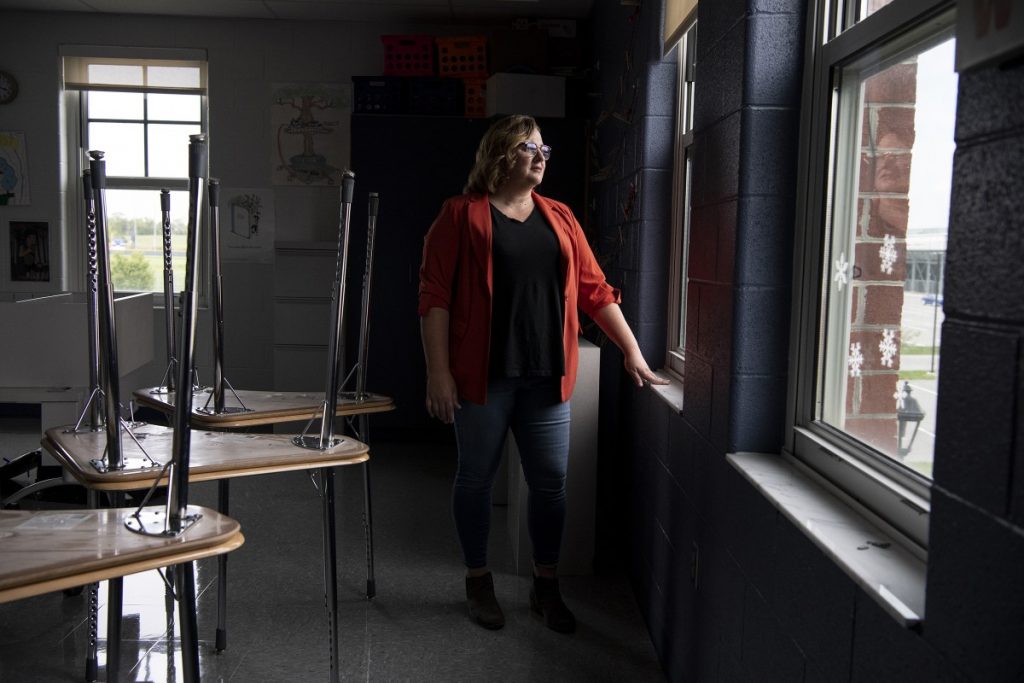
Jessica Salfia, a teacher and activist from West Virginia, responds to an article from The Atlantic early on in the pandemic that called on teachers across the country to stop “honing arguments” about why they can’t return to their classrooms, stating, “It’s time for teachers to get back to work.”
The article, Salfia writes, created a false equivalency between its author’s work as a nurse in a hospital battling the pandemic to the reopening of in-person instruction. Salfia explains why these are not the same things, detailing salary differences, safety concerns and the structural challenges Appalachian teachers face.
“We are conditioned to protect the kids in our care, and pushback against premature or unsafe school reopening plans is another version of this. Teachers are not whining. We’re making sure that when and if schools open, they are safe and can stay open. We are speaking out because we want our students, our families and our communities to be safe.”
6. Liberation is a Long Haul: Lessons from Juneteenth
Juneteenth is a heartening celebration of cultural cohesion, Jakeya Caruthers, cultural studies scholar and assistant professor of African and African American Studies at Berea College, writes in this commentary. In a year of demonstrations against racial injustice, Juneteenth was an opportunity this year to challenge understandings of the past, reckon with a national heritage of racism and commemorate the end of slavery.
“Juneteenth teaches us, just as it taught Black freedmen, that liberation is a long haul. It’s iterative, fragmented, complex and local. Its victories are costly and sometimes obscure. Juneteenth reminds us that the logics of anti-Blackness are neither invented nor undone in single events.”
7. National Media Want You to Believe Antifa and Boogaloo Are ‘Two Sides of the Same Coin.’ Here’s Why They’re Not.
In this piece, Chris Jones, 100 Days’ Report for A corps member, digs into the history of antifa and the boogaloo movement, two names that took over national headlines after the police killing of George Floyd in Minneapolis this summer and the weeks of demonstrations across the country that followed.
“Antifa and the boogaloo bois have become the violent embodiment of America’s deeply partisan politics, with conservatives decrying antifa, and liberals and progressives arguing that the boogaloo phenomenon is nothing more than the KKK with better memes. But directly comparing the two by a surface deep look at their structural similarities might suggest they’re somehow equitable, representing two sides of the same coin. A deeper look into the origins and actions of both reveal how incomparable they truly are.”
8. In Appalachia, United, We’re Not
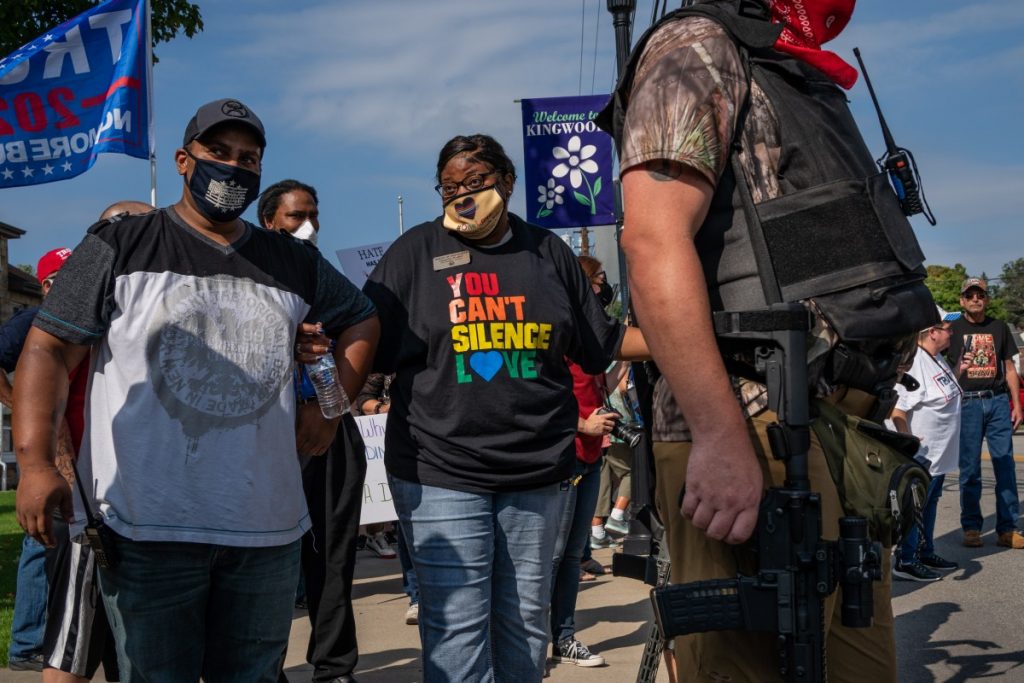
In early September, West Virginia Delegate Danielle Walker suited up in her protective body armor — purchased in response to the death threats — before attending a Black Lives Matter rally in Kingwood, West Virginia. The BLM marchers only made it a block before being surrounded by armed counter protestors, who shouted racial slurs again and again.
“The body armor started on September 12 and it hasn’t stopped. A threat comes every time I participate in a protest, march or even a vigil,” Walker said.
Report for America corps member Chris Jones and producer Jesse Wright documented what happened that day in this audio and visual collaboration with Reveal from The Center for Investigative Reporting. It features the voices of Walker, Frank Goines, organizer of the BLM march and Mo Pritt, the Preston County sheriff-elect who was there that day.
Body Armor to protect your voices. Body Armor to assure your freedoms. Body Armor is part of my lifeline like my insulin. An injection of hate has spread awareness and openness. Where’s the equity? Unity in the Community-myth/fact, true/false?#BeInformed https://t.co/dzjABfCbwq
— Danielle Walker (@officialdaniwv) November 15, 2020
9. Who Watches the Polls? W.Va. Election Officials Dismiss Federal Concerns over Threat of Domestic Extremism
During September’s presidential debate, President Donald Trump told his supporters to “go to the polls and watch very closely” to prevent voter fraud. But the Department of Homeland Security didn’t see election fraud as the threat to this year’s presidential race. Instead, they were more concerned about patrols of domestic extremists at polling places that could incite violence and intimidate voters.
But in this piece, which was published in collaboration with The GroundTruth Project, Report for America corps member Chris Jones reports that West Virginia officials dismissed the threat locally – despite recent local acts of extremism.
“For many in the far right, the contest taking place at the polls is simply a continuation of the one they’ve been carrying out in the streets: It’s an effort to take a stand against groups they see as domestic enemies and impose their own version of ‘order,’” the Southern Poverty Law Center said in a statement.
10. An Abingdon, Virginia-based Food Truck Reconsiders Appalachian Identity Through an Unlikely Pairing of Culinary Traditions
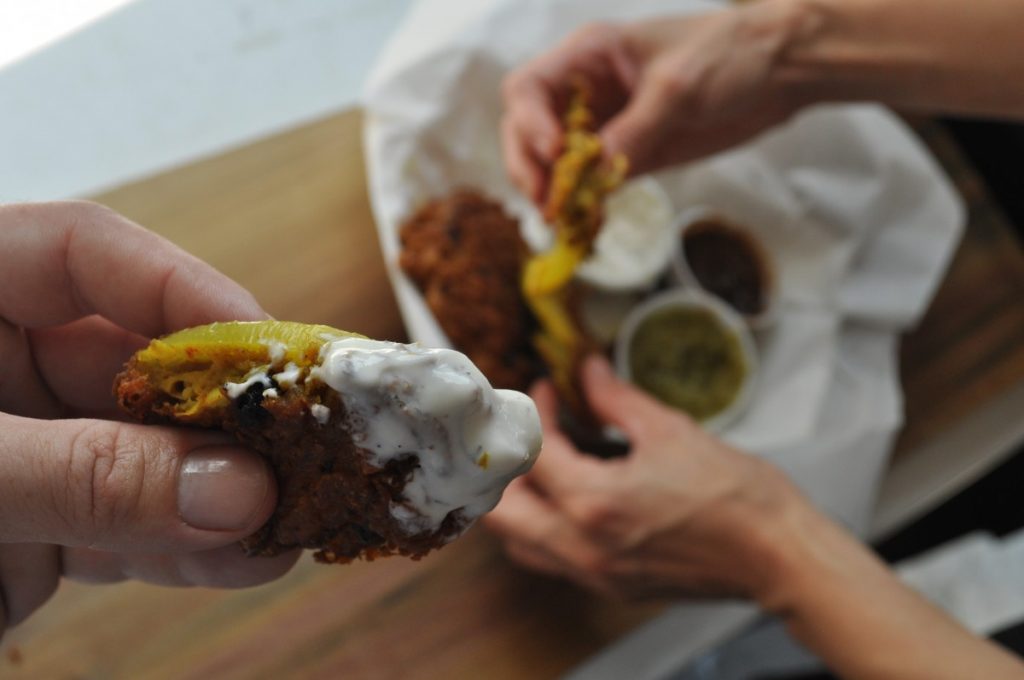
The Kazmis interpretation of home is served from the tiny kitchen of their ornately decorated food truck. Their restaurant-on-wheels, The Pakalachian, incorporates gastronomic cues from Katlin’s southwest Virginia home and the Punjab region of Pakistan, where Mohsin’s family has roots.
The cuisine served from the truck is exactly what it sounds like: a mashup of Pakistani and Appalachian gustatory traditions. Take The Pakalachian’s green tomato pakoras, for example. Mohsin describes the dish as both a classic Pakistani fritter and a play on classic fried green tomatoes found in Appalachia and across the American south.
“In the beginning, everybody was like, ‘I don’t know [if this will work] and they were really nervous. But they have really understood and have bought into the idea that it is a fusion of cultures that is so similar it’s disturbing sometimes.”


